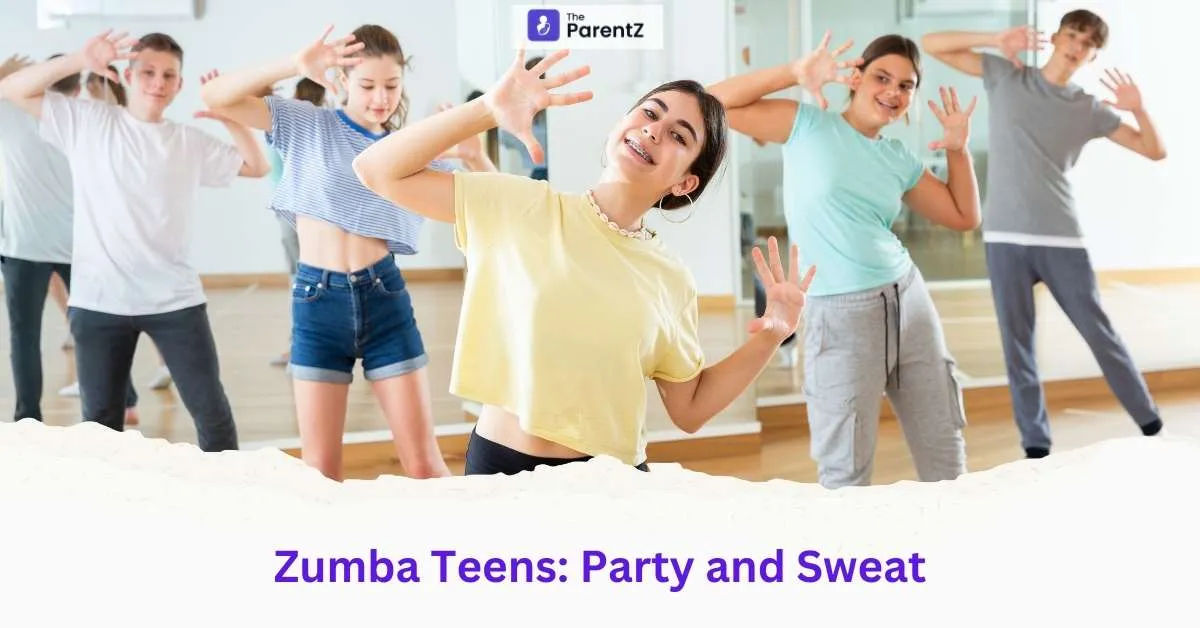In a world where screens and schoolwork vie for a teenager’s attention, finding an engaging fitness routine can feel like a challenge. Enter Zumba—a high-energy dance workout that combines Latin-inspired rhythms with simple-to-follow moves. For teens, Zumba isn’t just another exercise class; it’s a dynamic, upbeat “fitness party” that unleashes creativity, encourages social interaction, and delivers a serious sweat session. In this article, we’ll explore the many reasons Zumba is a fantastic fitness choice for teenagers, from its physical and mental health benefits to its social and cultural influences. We’ll also offer tips on how to get started, what to expect in a class, and how to stay motivated for the long haul.
1. What Is Zumba, Anyway?
Zumba originated in the 1990s when Colombian dancer and choreographer Alberto “Beto” Pérez forgot his usual aerobics tapes for a class he was teaching and improvised with Latin music. The spontaneous mash-up of salsa, merengue, cumbia, and reggaetón proved to be a hit. Fast-forward to today, and Zumba is a global phenomenon—offered in thousands of gyms, community centers, and schools worldwide. Over the years, the program has expanded to include specialized classes, such as Zumba Kids (designed for children ages 7-11) and Zumba Kids Jr. (for even younger children). Many instructors also offer teen-focused classes that adjust the music, intensity, and choreography for adolescent participants.
2. Why Zumba Is Perfect for Teens
2.1 High-Energy Fun
Traditional workouts—think running on a treadmill or lifting weights—can feel tedious and repetitive to many teens. Zumba, on the other hand, is characterized by vibrant music and an infectious party atmosphere. Instead of counting reps or staring at a clock, teens can get lost in the rhythm and energy of each song. The carefree environment makes exercise feel less like a chore and more like a dance party with friends.
2.2 Adaptable to Any Fitness Level
Zumba instructors typically offer modifications for different fitness levels. Whether a teen is brand new to exercise or already involved in sports, they can tailor the intensity of their Zumba moves. Variations in step height, arm placement, or speed can suit everyone—allowing each participant to challenge themselves without feeling left behind.
2.3 Boosts Confidence and Self-Expression
Adolescence often comes with heightened self-consciousness. The beauty of Zumba is that there’s no single “right way” to move. While instructors provide choreography, personal flair is highly encouraged. Teens can experiment with their own style, letting go of inhibitions and embracing creativity. This freedom of expression can foster greater self-confidence, both on and off the dance floor.
2.4 Inclusive Community
Zumba thrives on the concept of community. Teens who attend classes—whether in person or online—often forge connections with classmates who share a passion for dance and music. This camaraderie can be especially valuable for adolescents, as it offers a supportive social circle that promotes health, positivity, and teamwork.
3. Physical Benefits of Zumba
3.1 Cardiovascular Health
A hallmark of any Zumba class is continuous movement that elevates the heart rate. Teens benefit immensely from improved cardiovascular fitness—meaning their hearts become more efficient at pumping blood, their endurance levels rise, and they’re better prepared for other physical activities or sports. Over time, consistent cardio exercise can reduce the risk of health issues later in life.
3.2 Muscle Toning and Coordination
Zumba is not just about dancing; it incorporates a variety of moves that engage different muscle groups. Squats, lunges, hip rolls, and arm lifts work together to strengthen the lower body, core, and arms. Additionally, the combination of footwork and hand movements enhances coordination and balance, skills that translate into everyday tasks and other sports.
3.3 Weight Management
While weight shouldn’t be the sole focus of a teen’s exercise routine, staying active can help maintain a healthy body composition. Zumba’s high-energy routines burn calories effectively, supporting a balanced metabolism. Plus, because the class is enjoyable, teens are more likely to stick with it long-term compared to a more monotonous workout.
3.4 Enhanced Flexibility
Many Zumba routines include dynamic stretching, bending, and twisting, which can improve flexibility over time. Flexible muscles and joints can help reduce injury risk, particularly important for teens who participate in multiple activities or sports.
4. Mental and Emotional Benefits
4.1 Stress Relief
Teenagers juggle school assignments, extracurriculars, and possibly part-time jobs—not to mention the emotional ups and downs of adolescence. Physical activity, and dance in particular, can help alleviate stress by triggering the release of endorphins, the body’s “feel-good” chemicals. Letting loose to upbeat music provides a healthy outlet for pent-up energy or anxiety.
4.2 Mood Booster
Beyond stress relief, Zumba’s positive atmosphere can significantly improve a teen’s overall mood. The blend of energizing music, group camaraderie, and physical exertion creates a natural high that fosters happiness and optimism. This can be particularly beneficial for those who might feel isolated or struggle with low self-esteem.
4.3 Cognitive Benefits
Dance-based workouts like Zumba require learning choreography, memorizing sequences, and reacting to rhythmic cues. These activities can enhance cognitive function by challenging the brain to stay focused and process new information rapidly. Over time, improved coordination and memory skills can trickle into academic performance and other areas of life.
5. Getting Started with Zumba
5.1 Choosing the Right Class
- In-Person vs. Online: Many gyms and community centers offer teen-friendly Zumba classes. If joining in-person isn’t feasible, plenty of online classes or prerecorded videos are available. Teens can follow along in their living room, adjusting the intensity and pace as needed.
- Instructor Credentials: Look for a licensed Zumba instructor—someone who has completed official training and is familiar with modifications for various age groups.
- Class Level: If you’re new to dance or exercise, opt for a “Zumba Basic” or beginner-friendly class. This allows you to learn foundational moves and build confidence before moving on to advanced routines.
5.2 What to Wear and Bring
- Clothing: Comfortable workout attire—like leggings, shorts, or athletic pants paired with a breathable top—is best. The key is to wear something that allows free movement.
- Footwear: Sneakers with good arch support and minimal grip are ideal. Traditional running shoes can stick to the floor during lateral movements, so cross-trainers or dance sneakers may provide a better glide.
- Extras: A water bottle is essential to stay hydrated. Bringing a small towel is also helpful, as Zumba can work up quite a sweat!
5.3 Class Structure
Most Zumba classes begin with a warm-up to loosen muscles and get your heart pumping. The main portion of the class features choreographed dances set to various music genres—Latin, pop, hip-hop, and sometimes even K-pop or Bollywood. Each song typically includes a distinct dance style, so expect variety. Classes wind down with a cool-downsession that helps lower your heart rate and stretch major muscle groups.
6. Tips for a Great Zumba Experience
- Start Slow and Stay ConsistentIt’s natural to feel overwhelmed by rapid choreography. Focus on mastering a few moves at a time rather than aiming for perfection on the first day. As you attend classes consistently, you’ll pick up the routines faster and notice your stamina improving.
- Embrace the MusicZumba is all about having fun with the music. Don’t worry about hitting every move exactly like the instructor. Feel the beat, move your body in a way that feels comfortable, and let the rhythm guide you.
- Mind Your FormWhile creativity is encouraged, maintaining proper form reduces the risk of injury. Pay attention to key cues—like keeping the knees aligned, shoulders relaxed, and core engaged—to safely maximize your workout.
- Bring FriendsInviting friends to join a class can transform the experience into a social event. Working out together fosters motivation, accountability, and shared fun. If you’re in an online setting, you can even encourage a friend to tune in at the same time and compare notes afterward.
- Set Personal GoalsMaybe you want to improve your stamina, learn new choreography, or just feel more comfortable dancing in front of others. Setting small, achievable goals keeps you focused and provides a sense of accomplishment as you progress.
- Cross-TrainZumba is a fantastic workout, but variety can help teens develop well-rounded fitness. Consider pairing Zumba with strength training, yoga, or other sports to build overall physical resilience and reduce the chance of repetitive-stress injuries.
7. Keeping the Momentum
7.1 Tracking Progress
While Zumba isn’t about strict metrics like miles run or weight lifted, you can still monitor progress in fun ways. For instance, track endurance by noticing if you can last an entire class without needing extended breaks. Or note if you’re memorizing choreography faster as the weeks go on. Documenting these small wins can motivate you to keep dancing.
7.2 Experimenting with Different Styles
Zumba’s foundation lies in Latin music, but many instructors like to spice up classes with fresh sounds—such as Afrobeat, dancehall, or even rock-infused rhythms. If you find yourself craving more variety, explore different instructors or class formats. Some classes incorporate toning sticks (light weights) or step platforms for an extra challenge.
7.3 Avoiding Burnout
It’s easy to get hooked on Zumba’s lively beats, but avoid overdoing it. Balance is crucial for both physical health and sustained enjoyment. If you start feeling fatigued or bored, try taking a break or mixing in other activities. Listening to your body helps you stay healthy and enthusiastic about returning to class.
8. Beyond the Dance Floor
Zumba’s influence often extends past the workout itself. Many teens find that the confidence, rhythm, and social skills they develop in class translate into positive changes in everyday life—whether it’s feeling more at ease in social settings or tackling academic tasks with newfound energy. Some even get inspired to explore dance styles like salsa, hip-hop, or contemporary more seriously, turning a fun fitness class into a gateway for deeper artistic exploration.
Furthermore, participating in a group fitness program like Zumba can instill healthy habits that last well into adulthood. Teens who discover that exercise can be enjoyable—and even a source of self-expression—are more likely to maintain active lifestyles beyond their high school years. The supportive environment of a Zumba class can also reinforce communication skills and teamwork, qualities valuable in any future endeavor.
Conclusion
For teens seeking an upbeat, community-driven workout that feels more like a dance party than an exercise routine, Zumba checks all the boxes. Its high-energy environment, adaptable intensity, and fusion of global music make it both accessible and endlessly entertaining. Teens can expect not only to break a sweat but also to gain confidence, relieve stress, and bond with others through shared movement. Whether you choose to start in a gym class, at a local studio, or through online sessions, Zumba offers a welcome antidote to the pressures of modern teen life.
So put on your sneakers, grab some water, and get ready to party and sweat—Zumba-style. With each step, you’re not just dancing; you’re celebrating a healthier, happier you.








Be the first one to comment on this story.